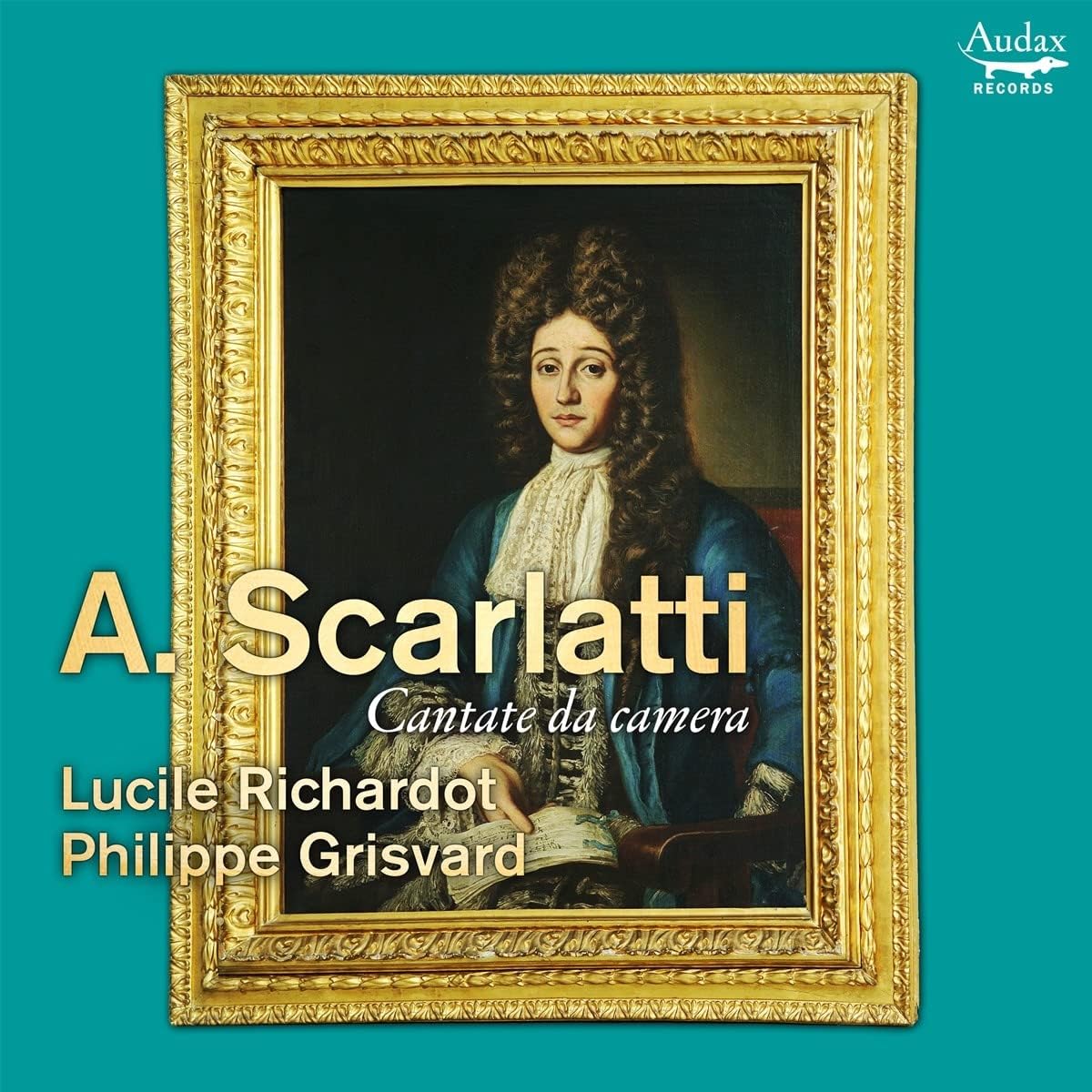Lucile Richardot mezzosoprano, Philippe Grisvard, harpsichord
69:58
Audax Records ADX11206
Given that Alessandro Scarlatti wrote some 500 chamber cantatas, it is not surprising that recordings of them can frequently claim to be premieres. No fewer than four of the five included on the present CD are identified as such; I’m in no hurry to attempt verification or otherwise. The cantatas are set off by interspersed keyboard works, in particular two Toccatas (in A minor and G minor) that in keeping with the typical 17th-century character of such works are both virtuoso pieces that include quasi-improvisatory arpeggio passages. They are played with great dexterity by Philippe Grisvard on a modern instrument inspired by 18th-century Italian instruments.
Grisvard, whose notes are otherwise intelligent and helpful, opens by implying that opera in Rome in the second half of the 17th century was essentially an underground operation due to papal disapproval. It’s a curious misnomer and one that certainly does not, as he suggests, explain the popularity of the chamber cantata, which served the function of providing entertainment for the sophisticated audiences that gathered in the palace salons of sacred and secular princes. Almost entirely concerned with the Roman Arcadian literary movement that played such an important role in operatic reform around the turn of the century, the chamber cantata was predominantly the milieu of shepherds and shepherdesses and the complications of their love lives. The treatment ranged from tragedy to humour, but texts frequently alluded to allegory or metaphor, being written by such leading Roman figures as Cardinal Benedetto Pamphilj, one-time patron of both Scarlatti and Handel. One of his cantatas, ‘Sarei troppo felice’, figures in the present collection and is particularly interesting as an example of the extreme flexibility the form enjoyed. While most cantatas were cast as a simple alternation of plain recitative and aria, or the reverse, here the opening is an exquisitely set two-line rumination, ‘I would be only too happy, If I were master of my thoughts’, that becomes a linking ritornello for a series of philosophical musings that enjoy the freedom to move with ease between recitative and aria. The effect is extraordinarily modern, rather akin to a stream of consciousness dialogue.
Far from simply purveying the simple innocence of the pastoral life, the best of the chamber cantata repertoire is a demanding one for singers. I have lost count of the number of recordings of the genre that fail because singers treat it as an extension of opera, even as miniature operas. In fact, its demands are quite different, requiring an intimate approach in which text and music can be directly conveyed in a nuanced manner to an audience that is in close proximity to the performers. The French mezzo Lucile Richardot and her accompanist well understand this. She is the possessor of what is intrinsically an unusually dark-hued mezzo, more contralto in timbre. Yet the voice has great range and colour, upper notes having the capability to surprise, sometimes bursting into brightness like the sun emerging from a darkened sky. Her chest notes are exceptional. Understandably she has particularly made her mark in French opera, yet recently she recorded a quite sensational Penelope in Monteverdi’s Il ritorno d’Ulisse in patria, a powerful assumption that drew full value from the all-important text. That attention to text is what makes these performances so completely engaging and idiomatic, along with a subtle and never overuse of rubato and portamento. Richardot also captures so well the humour, allegory and ambivalence of ‘La lezione di musica’, a cantata that delivers an unexpectedly painful conclusion.
There is so much here that is admirable – more than admirable – that it seems churlish to enter a caveat, but Richardot’s ornamentation is not as convincing or as efficiently articulated as it could be. Grisvard makes the point that the performers felt da capo ornamentation needed to be kept to a minimum in these works, which is arguable, particularly in the case of ‘Là dove a Mergellina’, Scarlatti’s last cantata, which is a more bravura work. But embellishments in general are not as fluently turned as is desirable. But that is a relatively small flaw in what from nearly all aspects is an exceptional recording of outstanding works.
Brian Robins
